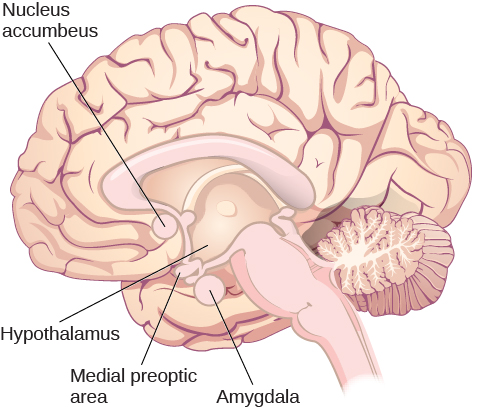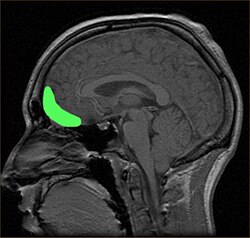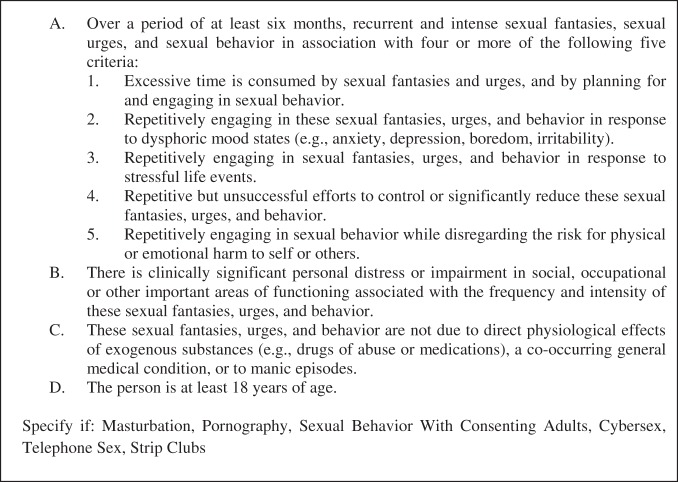As the body’s hormone control centre, the hypothalamus governs desire, lubrication and erection. The amygdala plays in important role in emotions such as pleasure. The orbitofrontal cortex, a decision-making locus, is involved in initiating sexual activity.


The proposed criteria for the Diagnostic and Statistical Manual of Mental Disorders, Fifth Edition (DSM-5, American Psychiatric Association, 2013) characterize Hypersexual Disorder (HD) as a repetitive and intense preoccupation with sexual fantasies, urges, and behaviors, leading to adverse consequences and clinically significant distress or impairment in social, occupational, or other important areas of functioning.
One defining feature of the proposed disorder includes multiple unsuccessful attempts to control or diminish the amount of time an individual engages in sexual fantasies, urges, and behavior in response to dysphoric mood states or stressful life events (Kafka, 2010).
There are many parallels concerning HD and addictive-related disorders and this appears especially true for shared commonalities between HD and a gambling disorder (Farre et al., 2015).
DSM-5 Proposed criteria for hypersexual disorder
